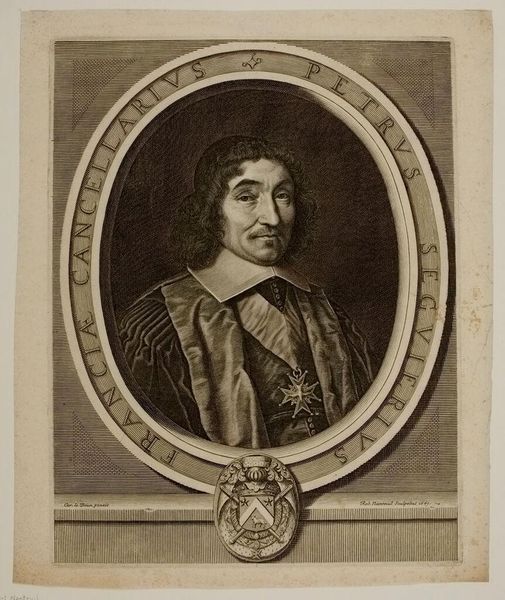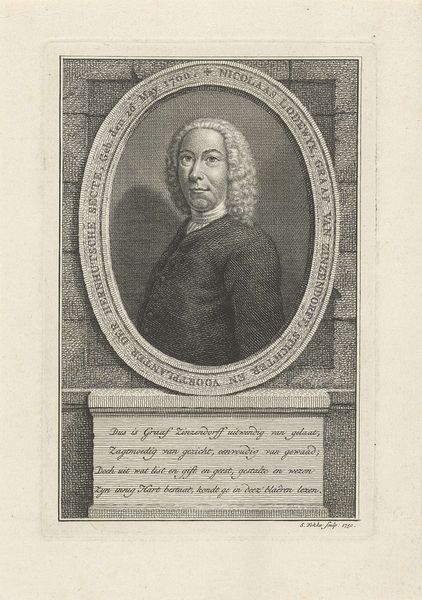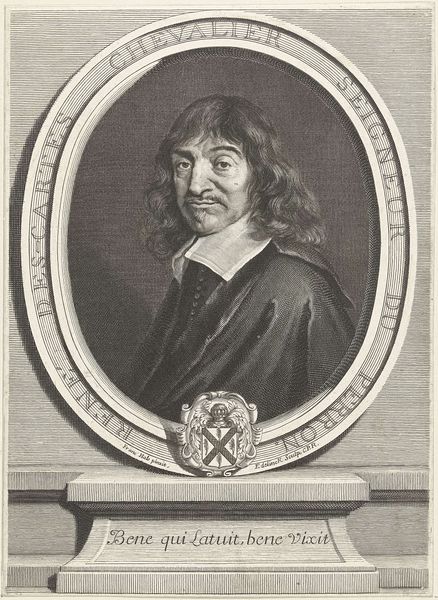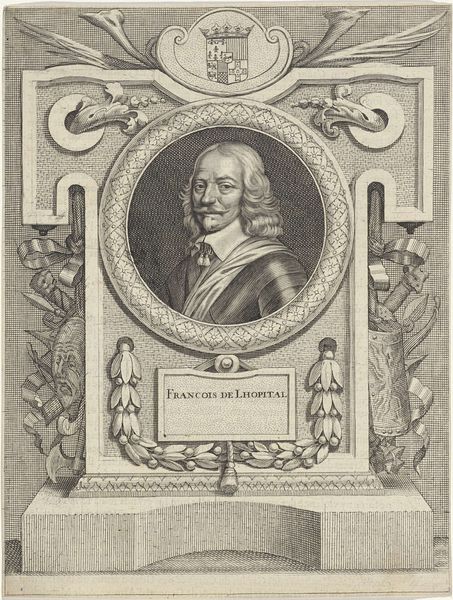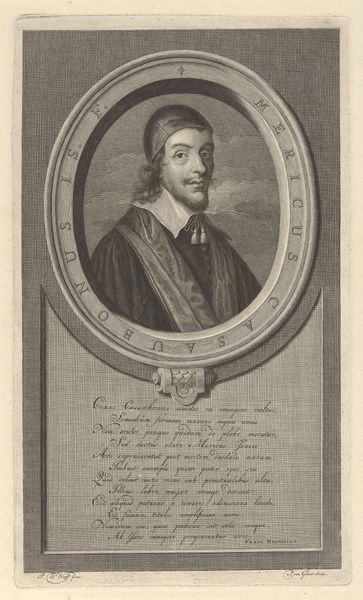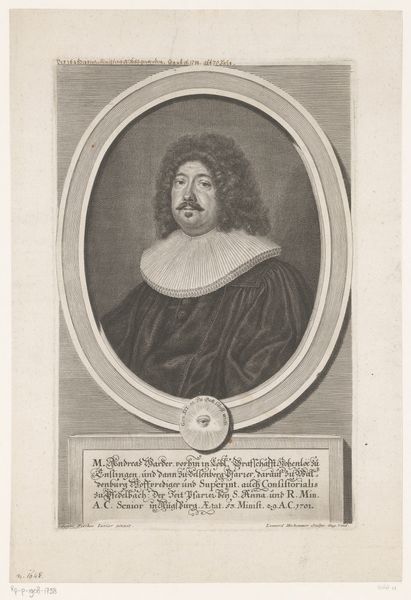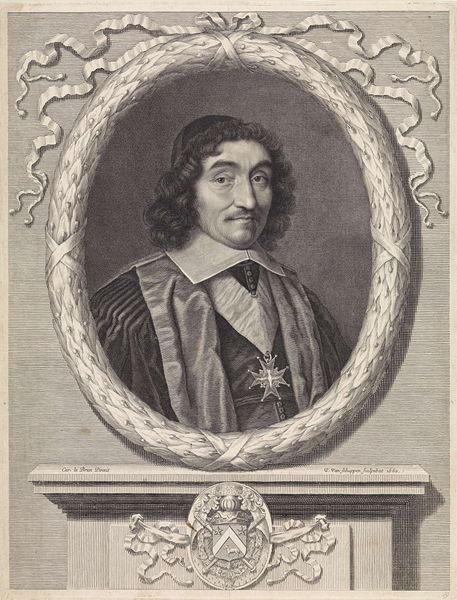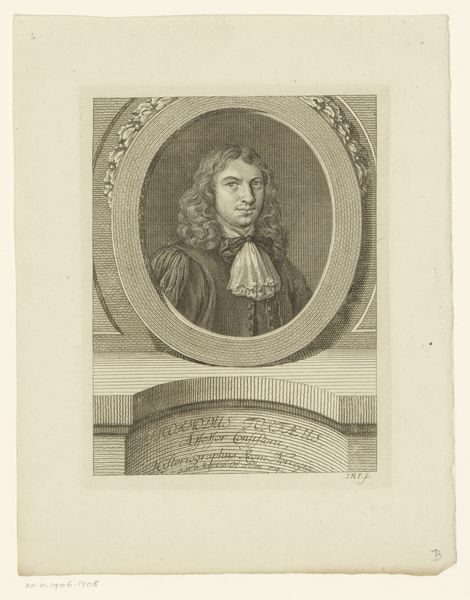
Portret van James Hamilton, eerste hertog van Hamilton c. 1669 - 1731
0:00
0:00
print, engraving
#
portrait
#
baroque
# print
#
old engraving style
#
history-painting
#
engraving
Dimensions: height 318 mm, width 182 mm
Copyright: Rijks Museum: Open Domain
Editor: Here we have Pieter van Gunst’s “Portret van James Hamilton, eerste hertog van Hamilton,” an engraving that’s dated sometime between 1669 and 1731. There’s a stillness to it, a formality in how James Hamilton is presented. He's framed within a geometric shape. What visual echoes or deeper meanings do you see in this portrait? Curator: The very act of framing him—especially in this circular window motif—echoes a kind of reverence. It’s not just a container; it's suggestive of looking into a past world, almost like a memory made manifest. What do you make of the inscription at the bottom? Editor: It feels almost like a eulogy or a commemorative plaque, cementing his legacy. Do you think that James Hamilton's portrayal and that commemorative text beneath influence how viewers might perceive not just him, but figures of power more broadly? Curator: Precisely! Power in portraits of this era often uses symbols to speak of stability, order, divine right – it's not accidental. Consider the armor—less a functional garment here and more a representation of his stature, invoking ideas of valor. It's cultural memory rendered in symbolic forms. The drape falling so casually feels so very Baroque; does this soften the more forceful image conveyed through his armor? Editor: It does add a certain refinement to the depiction, an aristocratic nonchalance that makes the image less austere. I'd not considered how staged elements build our memory of someone. Curator: These carefully constructed images influence our understanding of individuals, of entire eras! Understanding the symbols opens new ways of reflecting on the historical figures and values they represented.
Comments
No comments
Be the first to comment and join the conversation on the ultimate creative platform.
